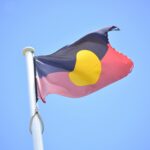For those looking to understand the soul of Canada, going beyond the stunning landscapes and vibrant cities is essential. The country’s identity is deeply woven into a rich tapestry of stories passed down through generations. These tales, originating from Indigenous oral traditions and the folklore of early European settlers, offer profound insights into the values, fears, and wisdom that have shaped the nation. Understanding this foundational Canadian folklore is a remarkable way for newcomers, including students and future permanent residents, to connect with the cultural heart of their new home.
Table of Contents
- The Wendigo: A Chilling Fable of Greed from Indigenous Lore
- La Chasse-Galerie: The Perilous Pact of the Flying Canoe
- Ogopogo: The Mysterious Serpent of Okanagan Lake
- The Raven: A Formidable Creator and Trickster of the West Coast
- Frequently Asked Questions About Canadian Folklore
The Wendigo: A Chilling Fable of Greed from Indigenous Lore
Deep within the forests of the Great Lakes region and the Atlantic coast, the oral traditions of the Algonquian-speaking peoples tell of a terrifying entity known as the Wendigo. This is not merely a ghost story told around a campfire; it is a profound and enduring cautionary tale with deep cultural resonance. The Wendigo is often described as a malevolent, emaciated creature, gaunt to the point of being skeletal, yet possessing supernatural strength and an insatiable hunger for human flesh. Its legend is inextricably linked to the harsh realities of winter, starvation, and the isolation of the northern wilderness. The story teaches that a human can transform into a Wendigo through acts of greed, excess, or by resorting to cannibalism in times of desperation. This transformation serves as a powerful metaphor for the loss of humanity when one succumbs to selfishness. The Wendigo’s endless hunger symbolizes the destructive nature of avarice—a hunger that can never be satisfied, driving the creature to consume everything in its path without thought or remorse. In a modern context, the Wendigo legend is often interpreted as a commentary on environmental destruction and unsustainable consumption, making it a piece of Canadian folklore that remains strikingly relevant today.
La Chasse-Galerie: The Perilous Pact of the Flying Canoe
Emerging from the vibrant culture of French-Canadian lumberjacks (voyageurs) in the 19th century, the legend of La Chasse-Galerie, or “The Flying Canoe,” is a quintessential piece of Quebecois folklore. The story speaks to the profound sense of homesickness experienced by men working in remote logging camps during the harsh Canadian winters. The tale typically begins on New Year’s Eve, a time of celebration and family. A group of isolated woodsmen, desperate to see their loved ones, make a perilous pact with the devil. In exchange for their souls, he grants them the ability to fly home in their canoe at incredible speeds. However, the deal comes with strict conditions: they must not utter God’s name, touch the cross of any church steeple, or break the pact in any way before their return by morning. The journey is a thrilling but terrifying race against time and temptation, as the men navigate the night sky, narrowly avoiding church spires and struggling to hold their tongues. La Chasse-Galerie is more than just an adventure story; it is a rich narrative about temptation, the power of faith, and the deep cultural importance of family and community in French-Canadian heritage. It captures the daring spirit of the voyageurs while serving as a moral lesson on the dire consequences of making deals with dark forces for short-term gain.
Ogopogo: The Mysterious Serpent of Okanagan Lake
In the picturesque Okanagan Valley of British Columbia lies a legend that blends ancient Indigenous spirituality with modern-day mystery: the Ogopogo. While many know it as a Canadian cousin to the Loch Ness Monster, its roots run much deeper and are far more significant. For the Syilx/Okanagan Nation, the original inhabitants of the region, the creature is known as N’ha-a-itk, which translates to “sacred spirit of the lake” or “water demon.” N’ha-a-itk was not a monster to be hunted but a powerful and respected spirit that demanded reverence. Oral traditions taught that safe passage across certain parts of Okanagan Lake required an offering, often a small animal, to appease the spirit. This history is crucial to understanding the Ogopogo story not as mere cryptozoology but as a part of a living Indigenous culture. Over the past century, as settler populations grew, the story evolved. The name “Ogopogo” came from a 1920s English music hall song, and countless alleged sightings have transformed the spirit into a local celebrity and tourist magnet. Despite its commercialization, the story of Ogopogo serves as a powerful reminder of the deep, layered history of the land and the importance of acknowledging and respecting its original Indigenous narratives.
Key Facts About the Ogopogo Legend
- Indigenous Origins: The legend originates with the Syilx/Okanagan Nation’s stories of N’ha-a-itk, a respected and feared water spirit, not a monster.
- Specific Location: The creature is exclusively associated with Okanagan Lake in British Columbia, a province known for its rich Indigenous culture and stunning natural beauty.
- Cultural Transformation: The narrative shifted over time from a sacred Indigenous spirit to the more sensationalized “Ogopogo” monster, fueled by settler accounts and media interest.
- Physical Description: Most modern sightings describe a large, serpentine creature with multiple humps and a head resembling that of a horse or a snake.
The Raven: A Formidable Creator and Trickster of the West Coast
On Canada’s Pacific Northwest coast, no figure from folklore is more prominent or complex than the Raven. Central to the cosmologies of Indigenous nations such as the Haida, Tlingit, Tsimshian, and Kwakwaka’wakw, the Raven is far from a simple character. He embodies a powerful duality: he is a revered culture hero, a creator god, and, at the same time, a mischievous trickster, a glutton, and a shapeshifter. This complexity is what makes him such a compelling and central figure. In one of the most famous creation stories, the world is shrouded in darkness until the Raven, through his cunning, devises a plan to steal the sun, moon, and stars from a powerful chief who keeps them hidden in a box. By releasing them into the sky, he brings light and life to the world and its people. Yet, in other tales, his actions are driven by his insatiable appetite or his desire to cause chaos for his own amusement. The Raven is not judged by a simple metric of good or evil; he represents the messy, creative, and often contradictory nature of life itself. His stories teach about ingenuity, consequence, and the importance of embracing complexity. The Raven’s image is one of the most iconic symbols of the Pacific Northwest, prominently featured in the region’s world-renowned art, from majestic totem poles to intricate carvings and paintings.
Frequently Asked Questions About Canadian Folklore
What is Canadian folklore?
Canadian folklore is the collection of traditional stories, myths, and legends that come from the diverse cultural groups within Canada. It includes the ancient oral traditions of Indigenous peoples as well as the tales brought over by European settlers, such as the French-Canadians. These stories offer insight into the country’s values, history, and relationship with its natural environment.
What does the Wendigo legend represent?
The Wendigo legend from Algonquian tradition represents a powerful cautionary tale against greed, excess, and selfishness. Its insatiable hunger serves as a metaphor for the destructive nature of avarice and unchecked consumption. The transformation from human to monster symbolizes the loss of humanity that occurs when one succumbs to these vices.
How is the Ogopogo story connected to Indigenous culture?
The modern Ogopogo legend is directly descended from the Indigenous stories of the Syilx/Okanagan Nation. They told of N’ha-a-itk, a sacred spirit of Okanagan Lake that was both respected and feared. Understanding this origin is key to appreciating the story’s depth beyond that of a simple lake monster tale.
What is the moral of the La Chasse-Galerie story?
The story of La Chasse-Galerie (The Flying Canoe) serves as a moral lesson about temptation and the severe consequences of making deals with evil forces for personal gain. It emphasizes the importance of faith and integrity while also exploring powerful themes of homesickness and the deep desire for family connection common in French-Canadian culture.
Why is the Raven an important figure in Pacific Northwest Indigenous culture?
The Raven is a vital figure because he embodies both creation and chaos, reflecting the complexity of life itself. As a culture hero, he is credited with bringing light to the world, but as a trickster, his actions are often driven by selfish desires. This dual nature makes him a central character in stories that teach about ingenuity, transformation, and the balance of order and disorder in the universe.
Talk to us to find out more. ->
The content above is not intended to provide legal advice or opinions of any kind and may not be used for professional or commercial purposes.







